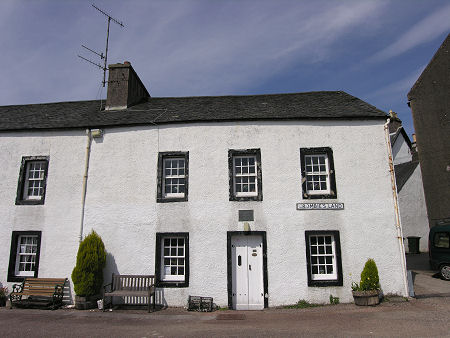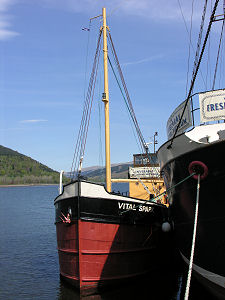 Neil Munro's Birthplace in Inveraray |
Neil Munro lived from 3 June 1863 to 22 December 1930. He was a journalist and author best remembered as the creator the the fictional Clyde puffer Vital Spark and her captain, Para Handy. The wider picture in Scotland at the time is set out in our Historical Timeline.
Neil Munro was born in a cottage in Inveraray close to the jail which now bears a plaque commemorating him. It is now called Para Handy Cottage. He was the illegitimate son of a kitchen-maid, Ann Munro. His father was rumoured to be a member of the household at Inveraray Castle. Hugh was educated at the local school in Inveraray and at the age of 13 he started work in the office of the clerk to the Sheriff of Argyll. In 1881 he moved to Glasgow to become a journalist, rising over time to become the assistant editor of the Glasgow Evening News.
From 1896 onwards, Munro published a series of novels and short stories, all with a historical theme and a Highland setting. Perhaps the best known are Doom Castle, published in 1901, and The New Road which appeared in 1914. The latter revolved around the changes brought about in the Highlands following the building of General Wade's military roads in the decades after the 1715 Jacobite uprising.
In 1902, Munro gave up full time journalism to give himself more time to write. He did, however, retain a weekly newspaper column which he wrote under the name Hugh Foulis and which he used to introduce a series of comic characters to the public. They included Archie, Jimmy Swann and, most successful of all, Para Handy. Para Handy was the captain of a Clyde puffer called Vital Spark and the stories about him soon found their way into book form, and later onto film and TV. There is an irony in his most famous work initially appearing under a pen name because he wished to maintain a separation between it and his more serious output.
Munro returned to journalism during the First World War, and after the war did little further writing. He died in 1930 in Helensburgh.

